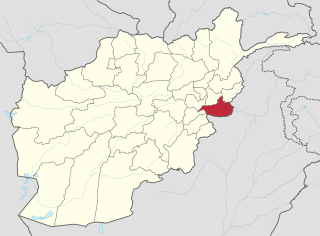Related Research Articles
A mining accident is an accident that occurs during the process of mining minerals or metals. Thousands of miners die from mining accidents each year, especially from underground coal mining, although accidents also occur in hard rock mining. Coal mining is considered much more hazardous than hard rock mining due to flat-lying rock strata, generally incompetent rock, the presence of methane gas, and coal dust. Most of the deaths these days occur in developing countries, and rural parts of developed countries where safety measures are not practiced as fully. A mining disaster is an incident where there are five or more fatalities.

A gas explosion is the ignition of a mixture of air and flammable gas, typically from a gas leak. In household accidents, the principal explosive gases are those used for heating or cooking purposes such as natural gas, methane, propane, butane. In industrial explosions, many other gases, like hydrogen, as well as evaporated (gaseous) gasoline or ethanol play an important role. Industrial gas explosions can be prevented with the use of intrinsic safety barriers to prevent ignition, or use of alternative energy.
The Chechnya Spetsnaz base explosion was the February 8, 2006, blast at the Russian Defense Ministry's special security unit barracks at Kurchaloi near Grozny, Chechnya, which killed at least 13 Russian special forces troops and injured 28 more, according to the official statement.
The al-Khilani mosque bombing occurred on 19 June 2007 when a truck bomb exploded in front of the Shia Al-Khilani Mosque in Baghdad, Iraq. At least 78 people were killed and another 218 injured in the blast. The explosion occurred just two days after a four-day curfew banning vehicle movement in the city was lifted after the al-Askari Mosque bombing (2007), and just hours after 10,000 US troops began the Arrowhead Ripper offensive to the north of Baghdad. Because the site was a Shia mosque, the bombing is presumed to have been the work of Sunnis. The Sinak area where the explosion took place was also the targeted by a suicide car bomber on 28 May 2007, which resulted in 21 deaths.

On 31 January 2013 in Mexico City, an explosion caused by a gas leak occurred beneath Building B-2 at the Torre Ejecutiva Pemex, a skyscraper complex that is the headquarters of Pemex, the Mexican state oil company. At least 37 people died and another 121 were injured when an explosion occurred in a building adjacent to the main tower. Earlier in the day, Pemex sent out a tweet saying that the building was being evacuated due to a "problem with the electrical system" in the complex that includes the skyscraper.

In February 2016, a series of explosions caused the deaths of 36 people, including 31 miners and five rescue workers, at the Severnaya coal mine 10 kilometres north of the city of Vorkuta, Komi Republic, Russia. The explosions were believed to be caused by ignition of leaking methane gas. It is the second deadliest mining disaster of the 2010s behind the Soma mine disaster, and fourth deadliest of the 21st century thus far.

On 12 January 2019, an explosion occurred 6 Rue de Trévise in 9th arrondissement of Paris, France. Two firefighters, a Spanish tourist, and another woman were killed, and forty-seven others were injured. According to local prosecutor Remy Heitz, the apparent cause of the explosion was a gas leak. Firefighters were present at the time of the blast while investigating a suspected gas leak.
On 18 January 2019, a pipeline transporting gasoline exploded in the town of Tlahuelilpan, in the Mexican state of Hidalgo. The blast killed at least 137 people and injured dozens more. Mexican authorities blamed fuel thieves, who had illegally tapped the pipeline. The explosion was particularly deadly because large crowds of people had gathered at the scene to steal fuel. Security forces tried to persuade people to move away from the scene, but they were outnumbered and asked not to engage with civilians for fear of causing a violent confrontation. The leak was reported at 17:04 CST (23:04 UTC), and the explosion occurred two hours later at 19:10. It took about four hours for responders to extinguish the fire.

On 18 October 2019, a bombing occurred in a mosque in Haska Meyna District, Nangarhar province, Afghanistan, killing at least 73 worshippers. Dozens more were injured in the attack. No group has claimed responsibility.
The Boksburg explosion took place on 24 December 2022, when a fuel tanker carrying liquefied petroleum gas (LPG) exploded underneath a railway bridge in Boksburg, in the Ekurhuleni Metropolitan Municipality in Gauteng, South Africa, with a death toll of 41 people as of 18 January 2023. Nearby infrastructure was damaged by the explosion.
References
- ↑ "Narayanganj mosque blast: death toll rises to 24;". The Daily Star. 5 September 2020. Retrieved 5 September 2020.
- 1 2 Manik, Julfikar Ali; Abi-Habib, Maria (5 September 2020). "Explosion at Mosque, Likely Caused by Gas Leak, Kills 16 in Bangladesh". The New York Times . ISSN 0362-4331 . Retrieved 5 September 2020.
- ↑ "Blast at Narayanganj mosque: Death toll rises to 31". The Financial Express. 10 September 2020. Retrieved 10 September 2020.